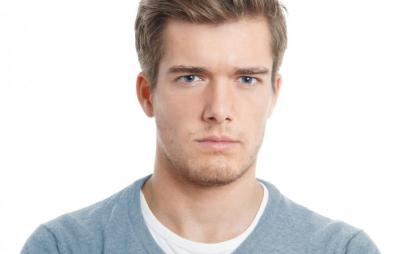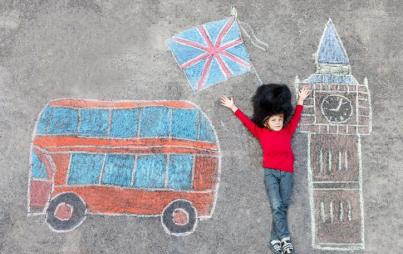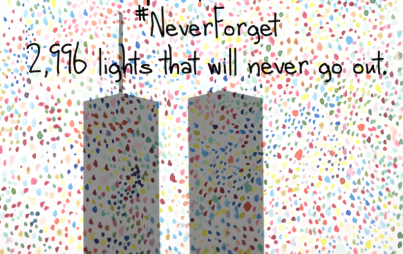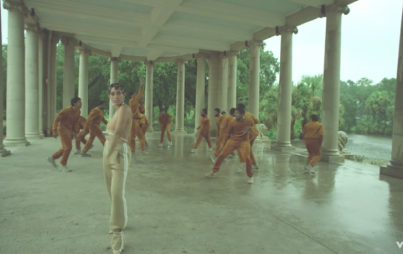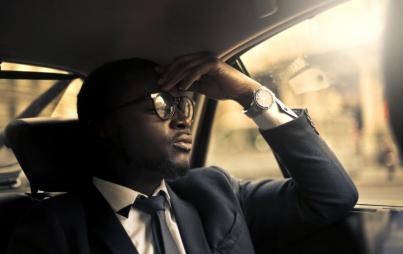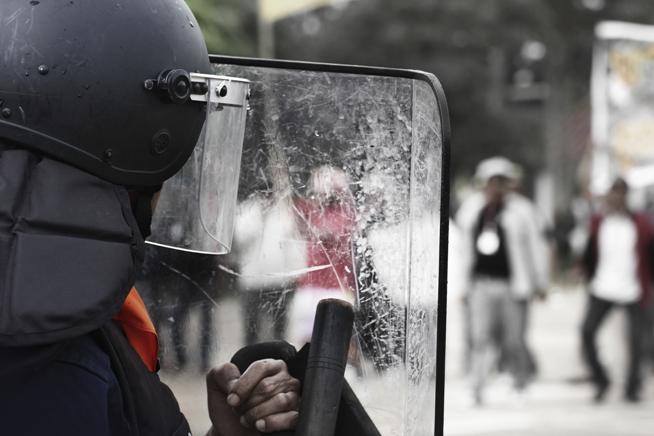
Within the last year, we have seen hundreds of protests in response to police brutality. In 2014, The Department of Justice released scathing reports on Cleveland and Ferguson Police Departments that exposed a level of corruption easily depicted in film but unimaginable in reality to most Americans.
The word "terrorism" has been thrust into the national conversation once again, this time in the wake of the horrific shooting of nine black churchgoers at bible study in Charleston, South Carolina by 21-year-old Dylann Roof.
There are four major reasons many blacks have described the massacre as an act of terrorism:
The historical significance of Emanuel AME Church.
The targeting of State Senator Rev. Clementa Picnkney.
Roof’s well-documented white supremacist political ideologies.
The very blatant bias in which the federal government uses the term terrorism.
Let’s talk about that last one.
The Western world defines terrorism through an almost exclusively Islamophobic narrative. In 2002, the first terrorism case tried under the newly-created anti-terrorism law charged a black man with terrorism for attempting to shoot fifteen people and rub Chick-fil-A sandwiches on their faces.
Yes. He was charged with terrorism.
And yet, FBI Director James Comey recently made this statement regarding the Charleston shootings: “Terrorism is an act of violence…to try to influence a public body or citizenry, so it’s more of a political act. And again, based on what I know so far, I don’t see it as a political act.”
Director Comey’s statement clearly conveys limitations of what American society considers terrorism. In an attempt to maintain control of the rhetoric around terrorism, Comey rejects Dylann Roof’s white supremacy as a political ideology, as well as the killings as a political act. Comey’s statement rebuking the use of the word terrorism was critical, because if a white man admitted that the racially-motivated attack targeting a historically black church and killing exclusively black people is considered an act of terrorism, America would be forced to recognize the fact that its historic repression of black communities is also terrorism.
Within the last year, we have seen hundreds of protests in response to police brutality. In 2014, The Department of Justice released scathing reports on Cleveland and Ferguson Police Departments that exposed a level of corruption easily depicted in film but unimaginable in reality to most Americans. These reports showed that an alarming number of officers were virtually untrained for de-escalation, they disproportionately targeted black people, and otherwise abused their power.
Not a single thing found in either report came as a shock to black Americans, who live these experiences every day and have done so for centuries. The modern American police force developed from slave patrols instituted during the transatlantic slave trade to protect white property, tactics of which included terrorizing slaves and returning them to slaveowners. These slavecatchers indeed bludgeoned and brutalized black bodies in an attempt to maintain a white supremacist institution that commodified black people. As the abolition movement gained traction, slave patrols developed into actual police forces employing Klu Klux Klan members adopting rhetoric and culture of quelling uprisings from blacks and white sympathizers.
While the 13th Amendment abolished slavery except as a form of punishment for a crime, black bodies continue to be commodified through the War on Drugs and the neo-slavery of prison labor in the prison industrial complex. Police departments receive monetary incentives in policing the War on Drugs that is not like policing any other crime: unlike other crimes that are generally first reported to 9-1-1, the Drug War is dictated by police forces and tactical teams that choose their targets. This is done despite the fact that whites are more likely to be found with contraband — law enforcement officers intentionally and disproportionately target black communities because they are politically weak.
Former DEA agent and US Marshal Matthew Fogg describes how he was instructed by superiors to target black neighborhoods at the risk of white areas having political blowback.
Again, Matthew Fogg’s story is no surprise to black Americans, but the United States still refuses to acknowledge the intentional repression of black people in so many ways. It continually denies that policies created with colorblind language are developed with racialized intent and enforced to oppress black communities. State-sanctioned violence extends far beyond police activity: black communities find themselves victims of state violence in the form of mass displacement in gentrification, disenfranchisement, the deprivation of educational resources, and the lasting effects of housing discrimination. Police simply function as the brutal arm of state-sanctioned violence, murdering hundreds, locking up thousands, and essentially locking millions of black people out of mainstream society. Today, police, much like slave patrols, suppress black communities by quelling uprisings and sustaining systems of oppression.
It then becomes clear that the videos of police dehumanizing, brutalizing, and destroying black bodies depict an age-old tradition. It’s a continuation of anti-black political ideologies cloaked in “law and order” rhetoric using things like the war on drugs as pretext for terrorizing black communities. This keeps the narrative of terrorism in a chokehold such that the world cannot recognize America’s own domestic terror on its citizens. It’s painfully obvious that, when a country’s law enforcement both occupies and abuses black communities to sustain a white supremacist power structure, the place is neck-deep in centuries of terrorism.
The problem the black community faces is not police brutality — it’s police terror.


